Abstract
1. We have examined the central actions of clonidine (2-(2-6-dichlorphenylamine)-2-imidazoline hydrochloride). It has been confirmed that when infused into the vertebral artery at 2 μg/min, it caused a decrease in blood pressure and a slight increase in heart rate. The same dose given intravenously or into the carotid artery had no effect.
2. Intravertebral clonidine also greatly reduced the reflex response to carotid occlusion and the effects of an intravertebral infusion of angiotensin (1 ng/kg)/min.
3. This central action of clonidine was antagonized by the adrenergic neurone blocking drug bethanidine (4-5 mg/kg intravenously) even after the cervical cord had been transected at C4-C6 suggesting that bethanidine also has central actions.
4. Other drugs which also antagonized the central effects of clonidine were guanethidine (4-5 mg/kg intravenously), bretylium (10 mg/kg intravenously) and phentolamine (0·2 mg/kg intravenously).
5. It is suggested that there are central adrenergic neurones which inhibit cardiovascular autonomic reflexes and that the central autonomic effects of clonidine are due to stimulation of inhibitory adrenoceptors. The antagonism by adrenergic neurone blocking drugs of the effect of clonidine could therefore be due to blockade of these inhibitory pathways.
6. The central action of clonidine could only be demonstrated when a high concentration was infused into the vertebral artery and could not be shown with oral doses of (20 μg/kg)/day for seven days. It is concluded that the hypotensive action of therapeutic doses is unlikely to be due to the central action of clonidine.
Full text
PDF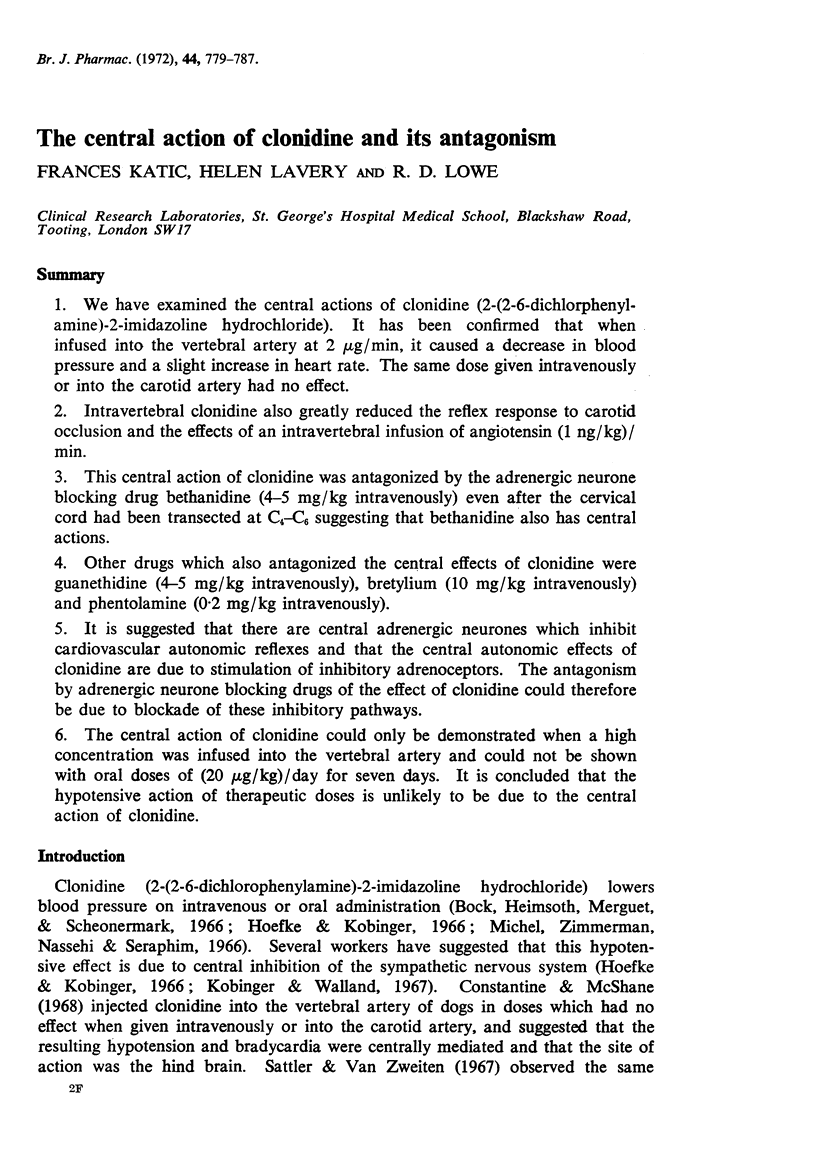
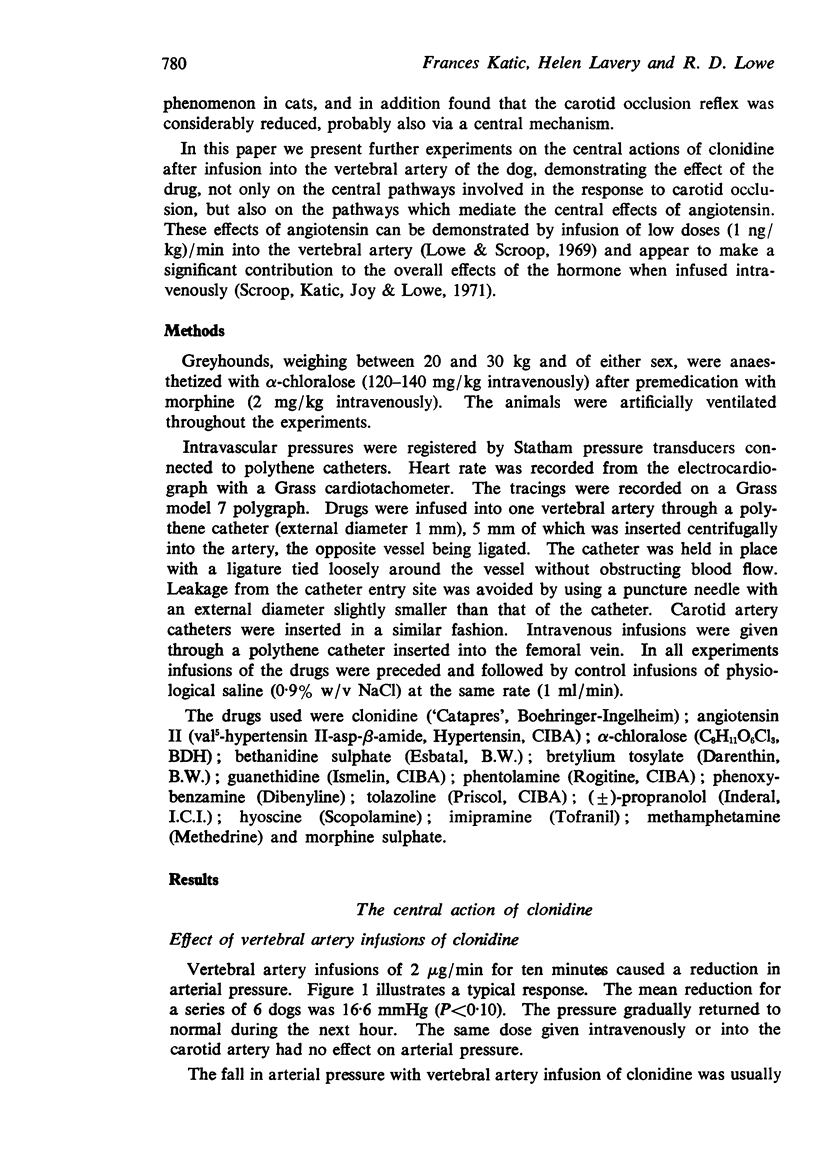

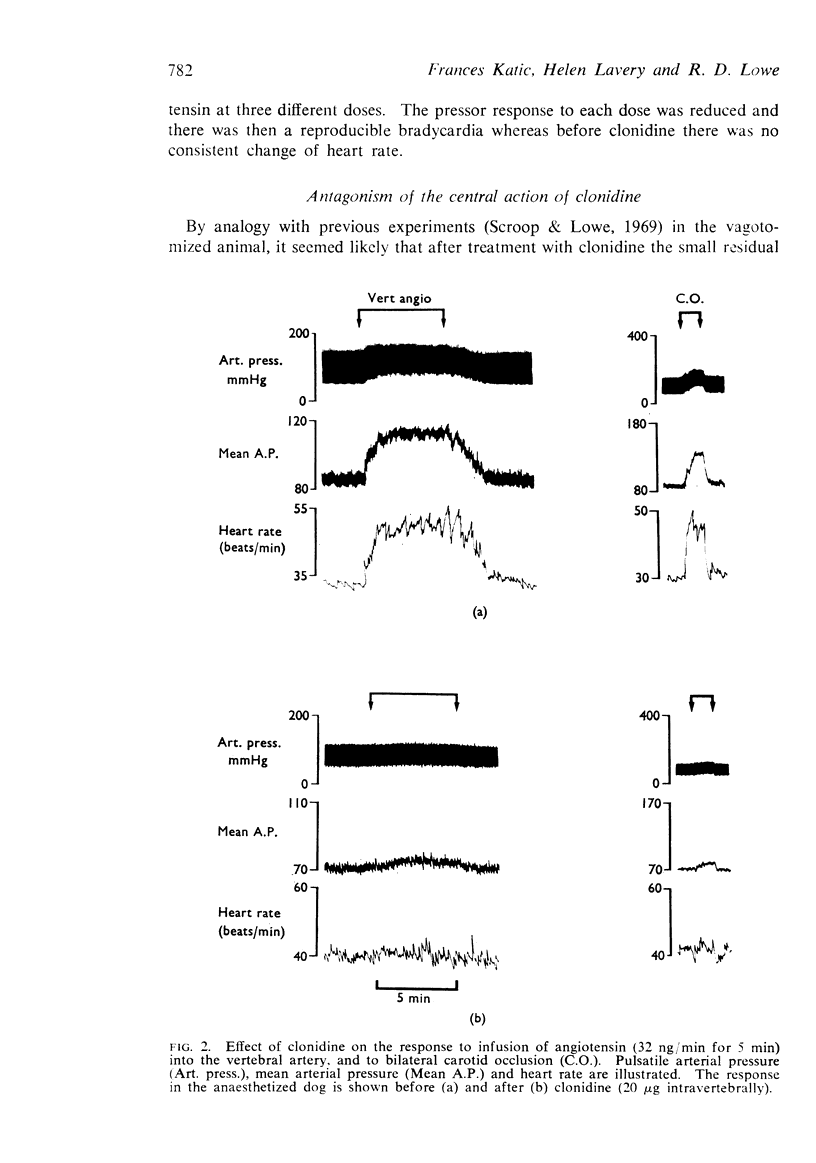
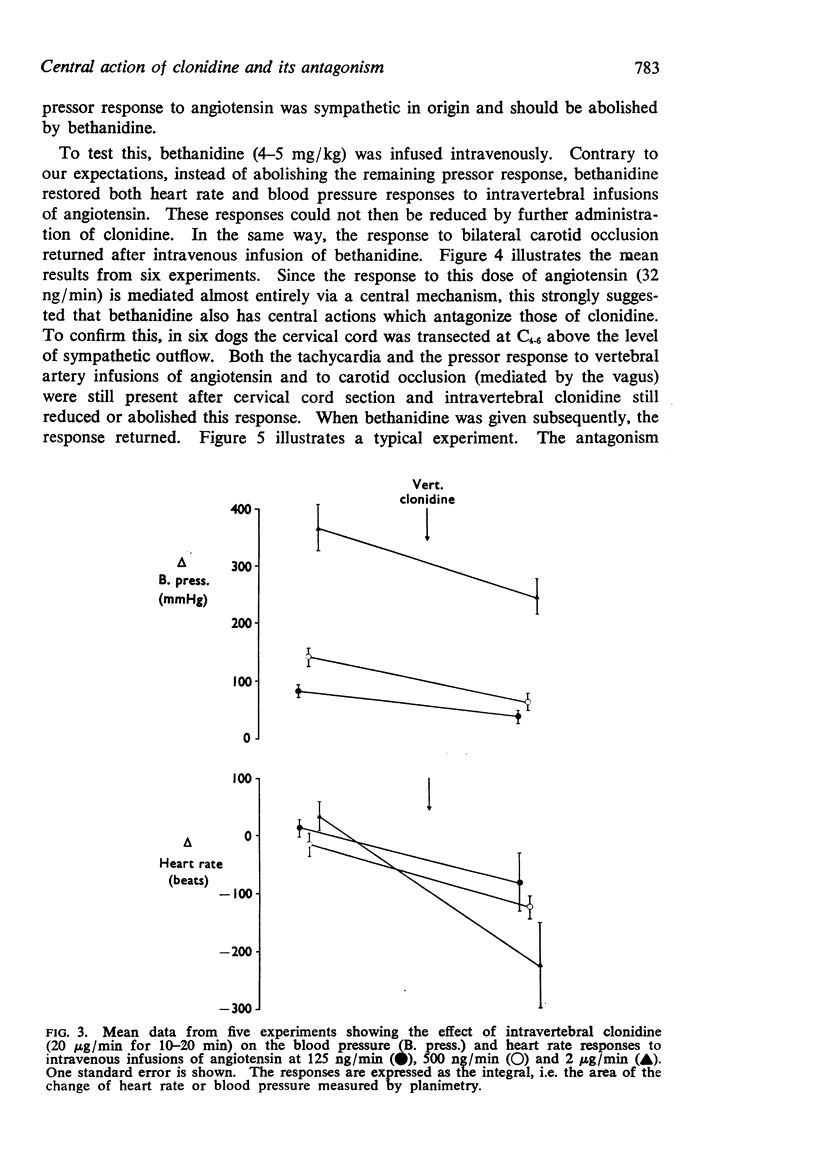
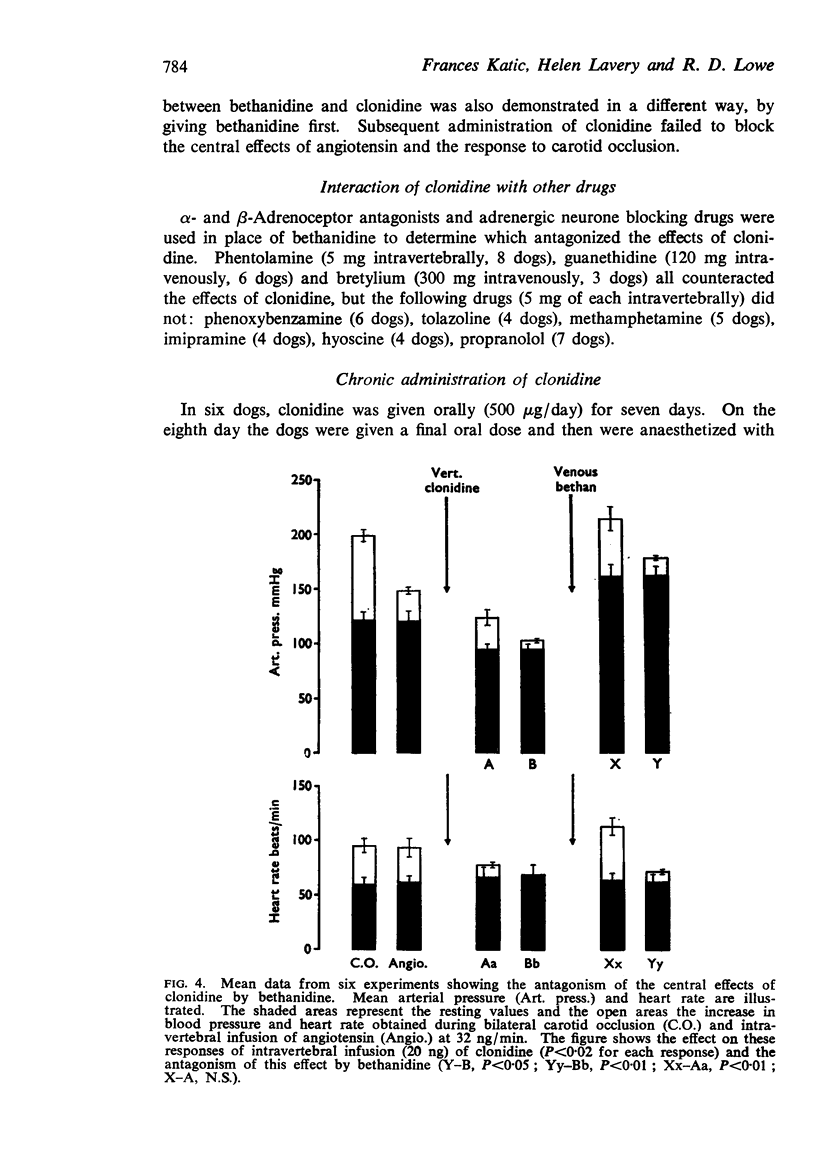
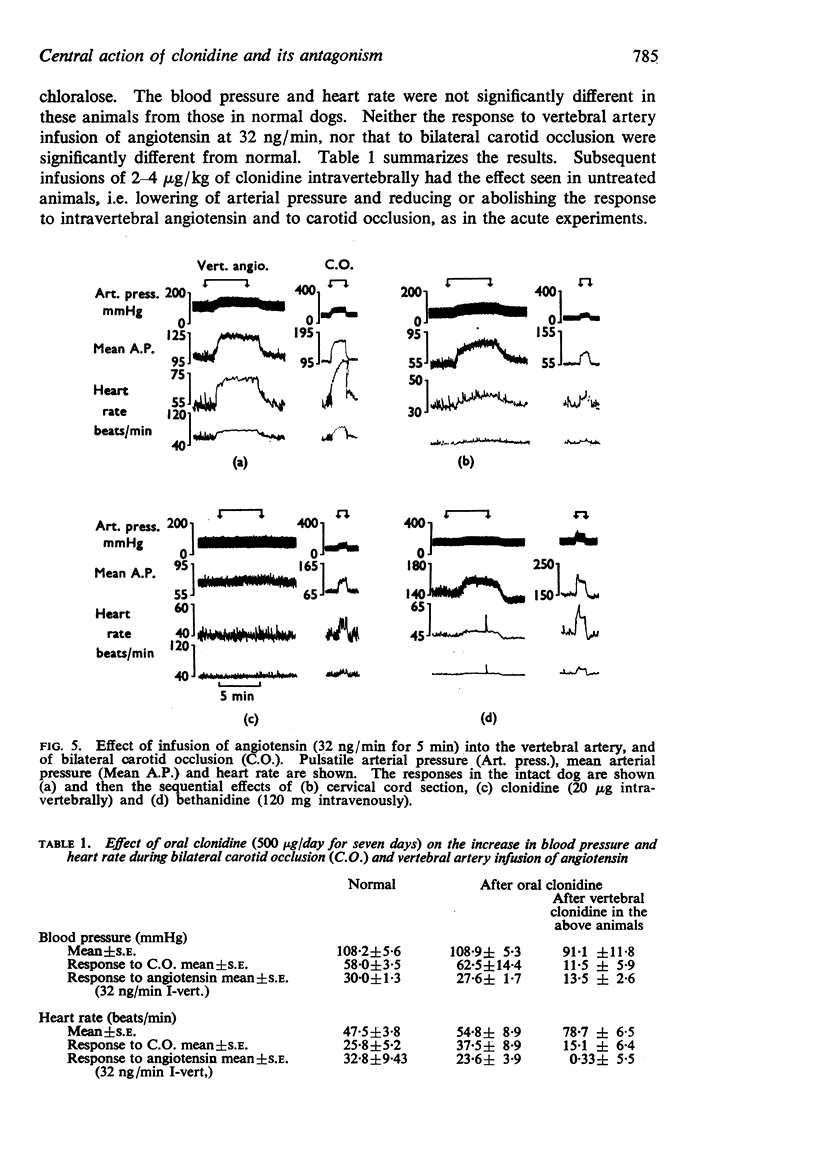
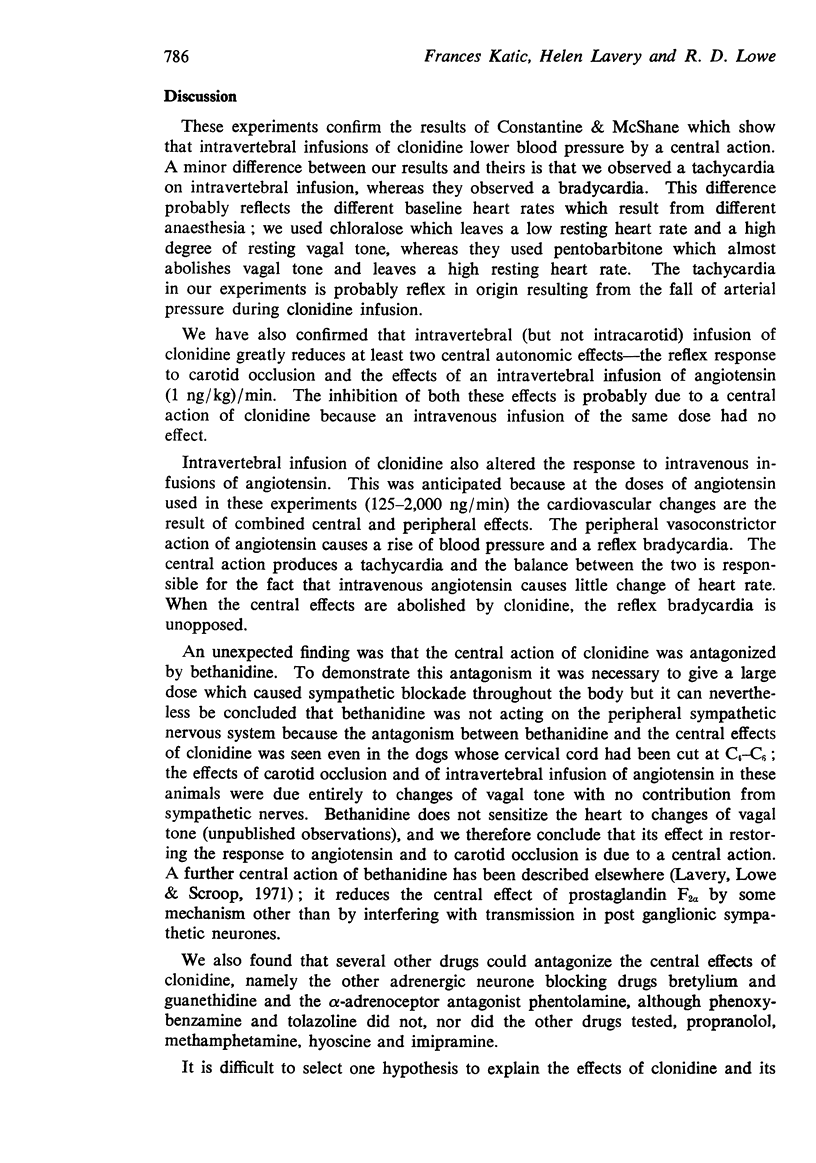
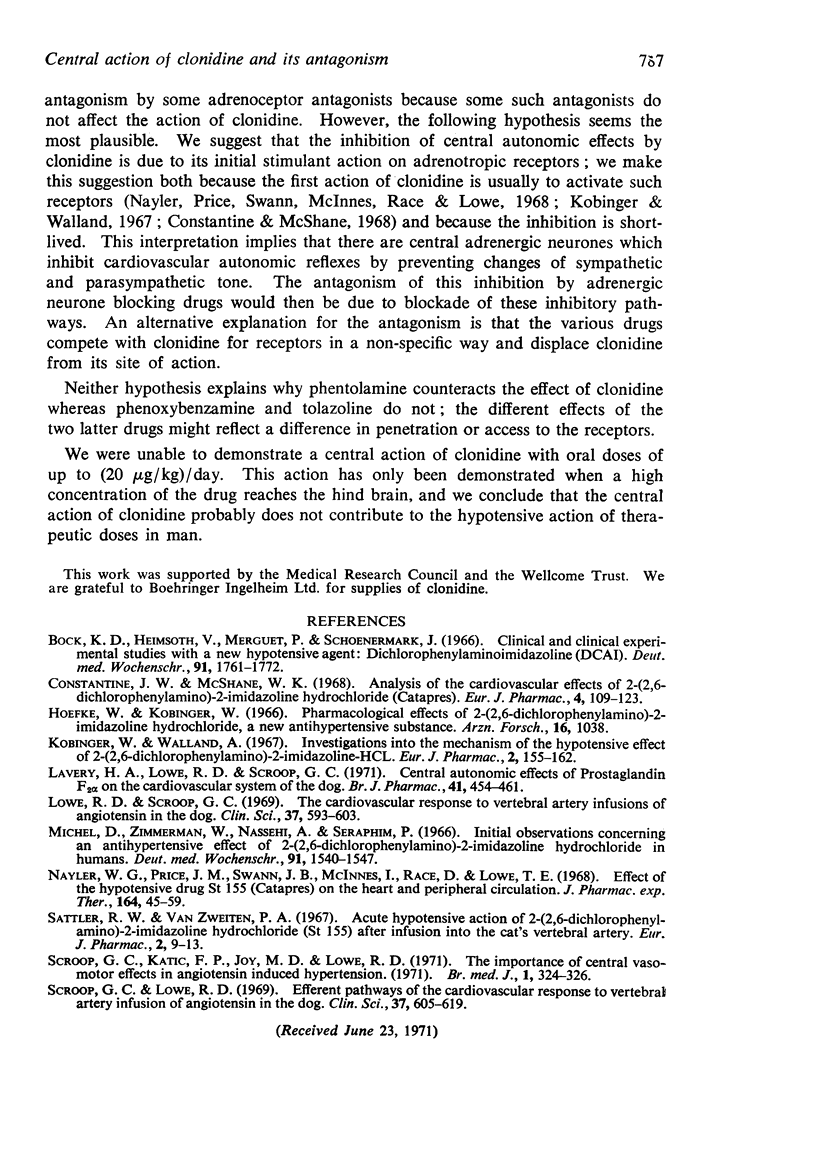
Selected References
These references are in PubMed. This may not be the complete list of references from this article.
- Bock K. D., Heimsoth V., Merguet P., Schönermark J. Klinische und klinisch-experimentelle Untersuchungen mit einer neuen blutdrucksenkenden Substanz: Dichlorphenylaminoimidazolin. Dtsch Med Wochenschr. 1966 Oct 7;91(40):1761–1770. doi: 10.1055/s-0028-1111588. [DOI] [PubMed] [Google Scholar]
- Constantine J. W., McShane W. K. Analysis of the cardiovascular effects of 2-(2,6-dichlorophenylamino)-2-imidazoline hydrochloride (Catapres). Eur J Pharmacol. 1968 Sep;4(2):109–123. doi: 10.1016/0014-2999(68)90167-2. [DOI] [PubMed] [Google Scholar]
- Hoefke W., Kobinger W. Pharmakologische Wirkungen des 2-(2,6-Dichlorphenylamino)-2-imidazolin-hydrochlorids, einer neuen, antihypertensiven Substanz. Arzneimittelforschung. 1966 Aug;16(8):1038–1050. [PubMed] [Google Scholar]
- Kobinger W., Walland A. Investigations into the mechanism of the hypotensive effect of 2-(2,6-dichlorphenylamino)-2-imidazoline-HCl. Eur J Pharmacol. 1967 Dec;2(3):155–162. doi: 10.1016/0014-2999(67)90080-5. [DOI] [PubMed] [Google Scholar]
- Lavery H. A., Lowe R. D., Scroop G. C. Central autonomic effects of prostaglandin F2 alpha on the cardiovascular system of the dog. Br J Pharmacol. 1971 Mar;41(3):454–461. doi: 10.1111/j.1476-5381.1971.tb08043.x. [DOI] [PMC free article] [PubMed] [Google Scholar]
- Lowe R. D., Scroop G. C. The cardiovascular response to vertebral artery infusions of angiotensin in the dog. Clin Sci. 1969 Dec;37(3):593–603. [PubMed] [Google Scholar]
- Michel D., Zimmermann W., Nassehi A., Seraphim P. Erste Beobachtungen über einen antihypertensiven Effekt von 2-(2,6-Dichlorphenylamino)-2-imidazolin-hydrochlorid am Menschen. Dtsch Med Wochenschr. 1966 Sep 2;91(35):1540–1547. doi: 10.1055/s-0028-1111550. [DOI] [PubMed] [Google Scholar]
- Nayler W. G., Price J. M., Swann J. B., McInnes I., Race D., Lowe T. E. Effect of the hypotensive drug ST 155 (Catapres) on the heart and peripheral circulation. J Pharmacol Exp Ther. 1968 Nov;164(1):45–59. [PubMed] [Google Scholar]
- Sattler R. W., van Zwieten P. A. Acute hypotensive action of 2-(2,6-dichlorophenylamino)-2-imidazoline hydrochloride (St 155) after infusion into the cat's vertebral artery. Eur J Pharmacol. 1967 Oct;2(1):9–13. doi: 10.1016/0014-2999(67)90016-7. [DOI] [PubMed] [Google Scholar]
- Scroop G. C., Katic F., Joy M. D., Lowe R. D. Importance of central vasomotor effects in angiotensin-induced hypertension. Br Med J. 1971 Feb 6;1(5744):324–326. doi: 10.1136/bmj.1.5744.324. [DOI] [PMC free article] [PubMed] [Google Scholar]
- Scroop G. C., Lowe R. D. Efferent pathways of the cardiovascular response to vertebral artery infusions of angiotensin in the dog. Clin Sci. 1969 Dec;37(3):605–619. [PubMed] [Google Scholar]


